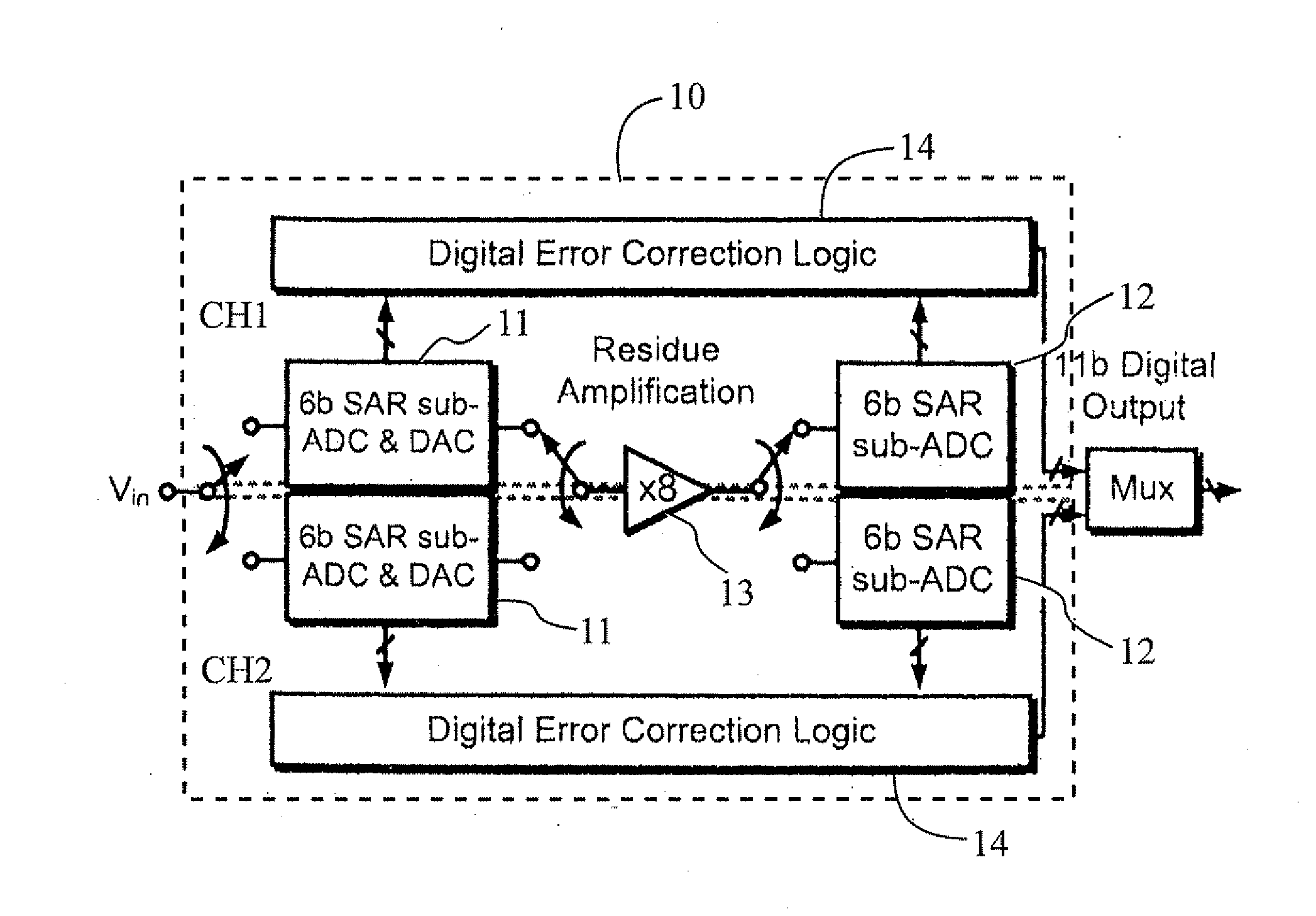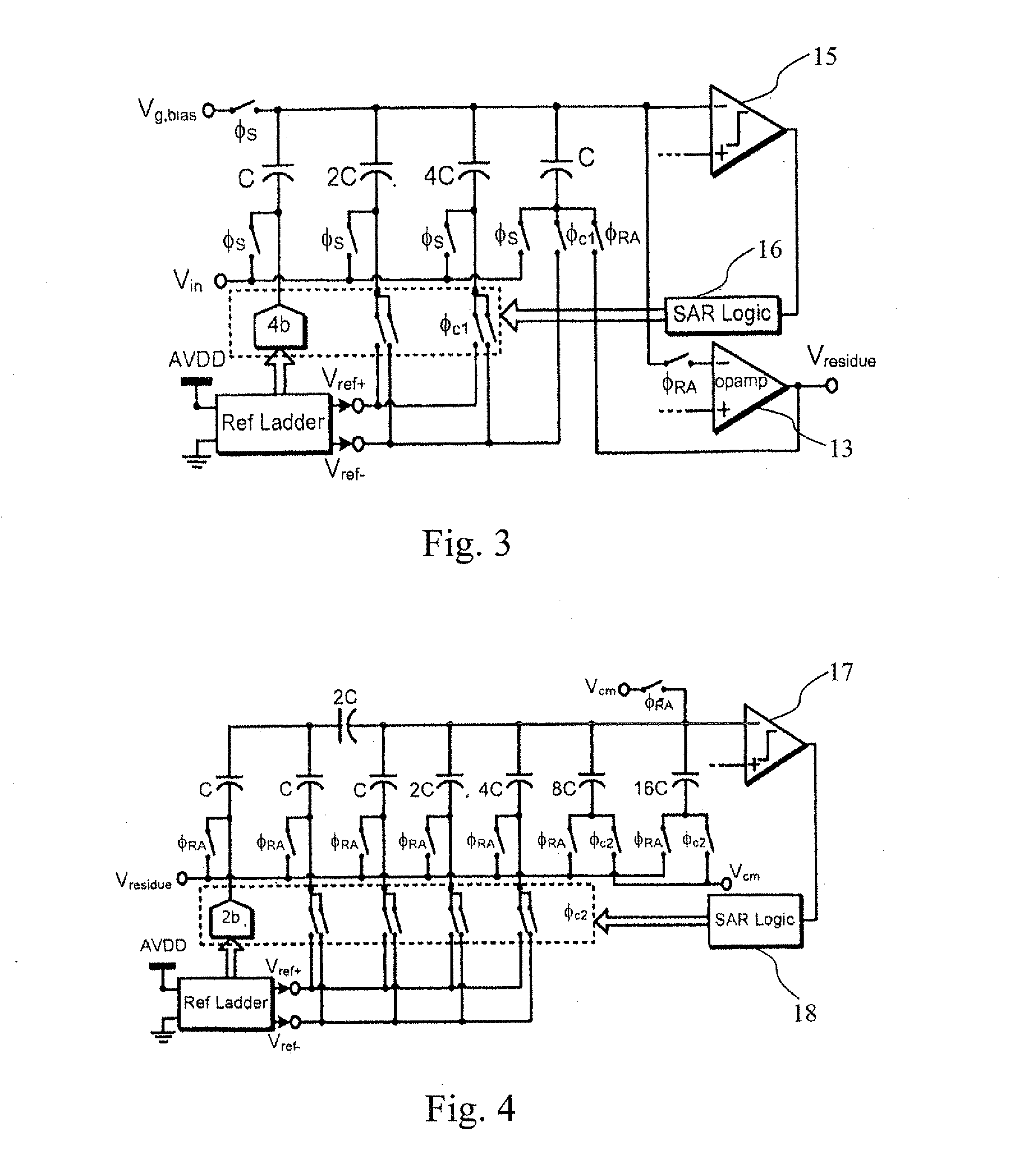Analog to digital converter circuit
a converter circuit and analog technology, applied in the field of analog to digital converters, can solve the problems of sharp power performance drop and difficult design of high-gain op-amps, and achieve the effect of low power consumption
- Summary
- Abstract
- Description
- Claims
- Application Information
AI Technical Summary
Benefits of technology
Problems solved by technology
Method used
Image
Examples
Embodiment Construction
[0015]A preferred embodiment of the present invention will be described hereinafter with reference to the accompanying drawings.
[0016]Reference is now made to FIG. 1. FIG. 1 is a block diagram of an analog to digital converter (ADC) according to an embodiment of the present invention. A two-step time-interleaved successive approximation register (SAR) ADC circuit 10 with 11-bit resolution and 60 MS / s sampling rate is shown in FIG. 1. The ADC circuit 10 includes two time-interleaved two-step SAR ADCs. Each of the SAR ADCs comprises a first stage SAR sub-ADC 11, a second stage SAR sub-ADC 12, a residue amplifier 13 and a digital error correction logic 14.
[0017]The first stage SAR sub-ADC 11, which is a 6-bit ADC, receives an analog input signal Vin and converts the analog input signal Vin to generate a 6-bit digital code. Thus, the first stage SAR sub-ADC 11 converts the coarse 6-bit code. The first stage SAR sub-ADC 11 also generates a residue signal to be amplified by the residue am...
PUM
 Login to View More
Login to View More Abstract
Description
Claims
Application Information
 Login to View More
Login to View More - R&D
- Intellectual Property
- Life Sciences
- Materials
- Tech Scout
- Unparalleled Data Quality
- Higher Quality Content
- 60% Fewer Hallucinations
Browse by: Latest US Patents, China's latest patents, Technical Efficacy Thesaurus, Application Domain, Technology Topic, Popular Technical Reports.
© 2025 PatSnap. All rights reserved.Legal|Privacy policy|Modern Slavery Act Transparency Statement|Sitemap|About US| Contact US: help@patsnap.com



